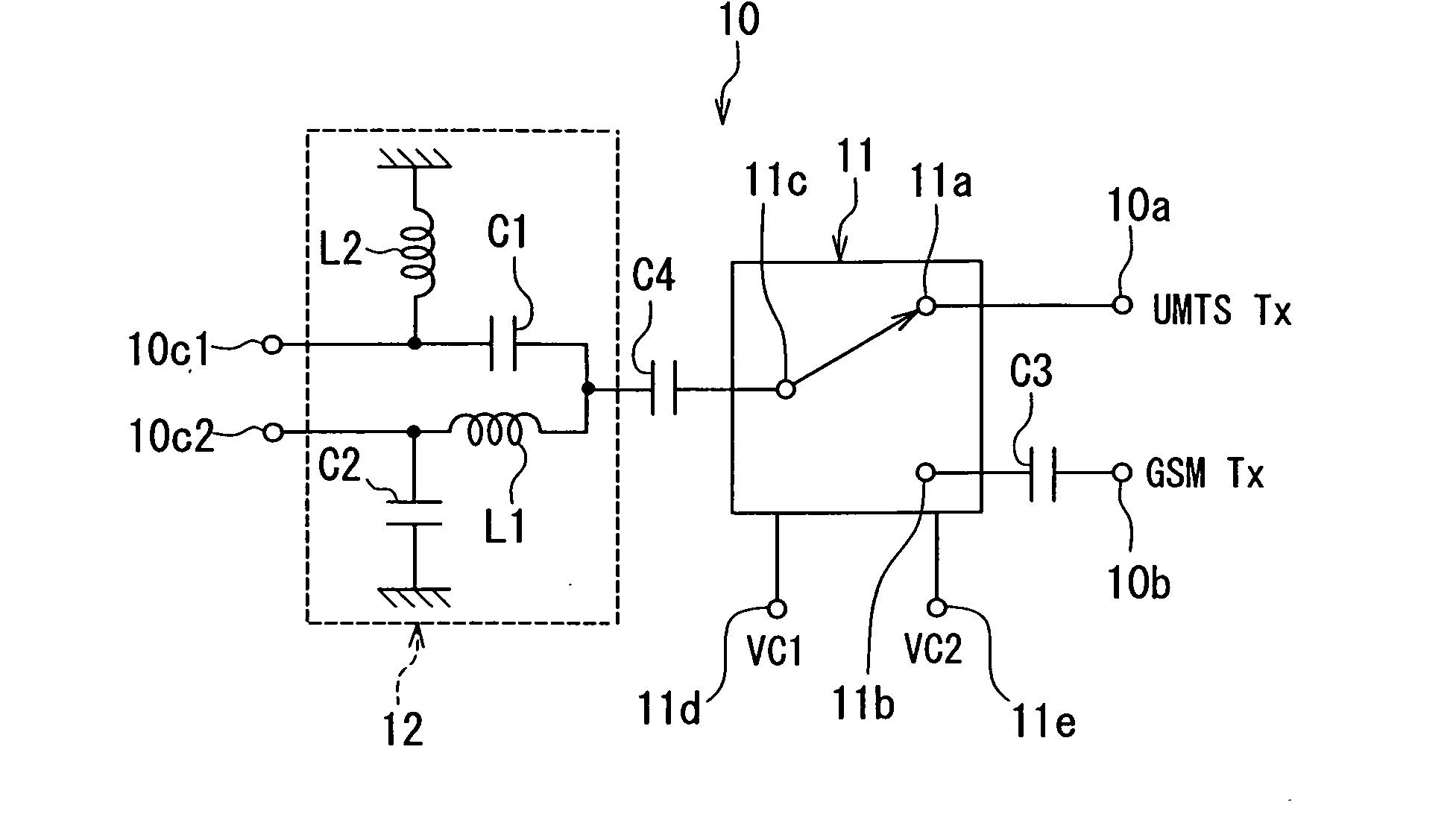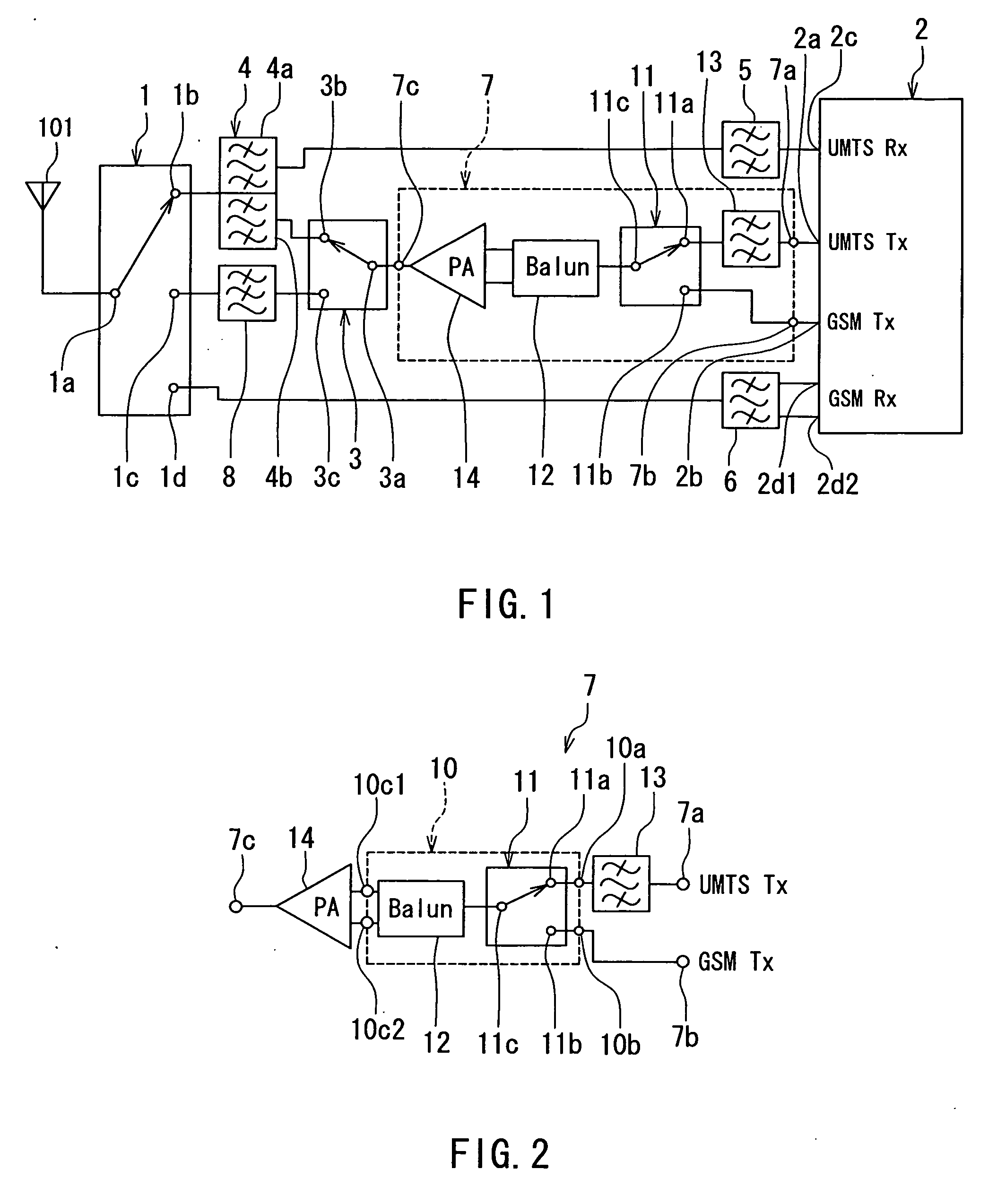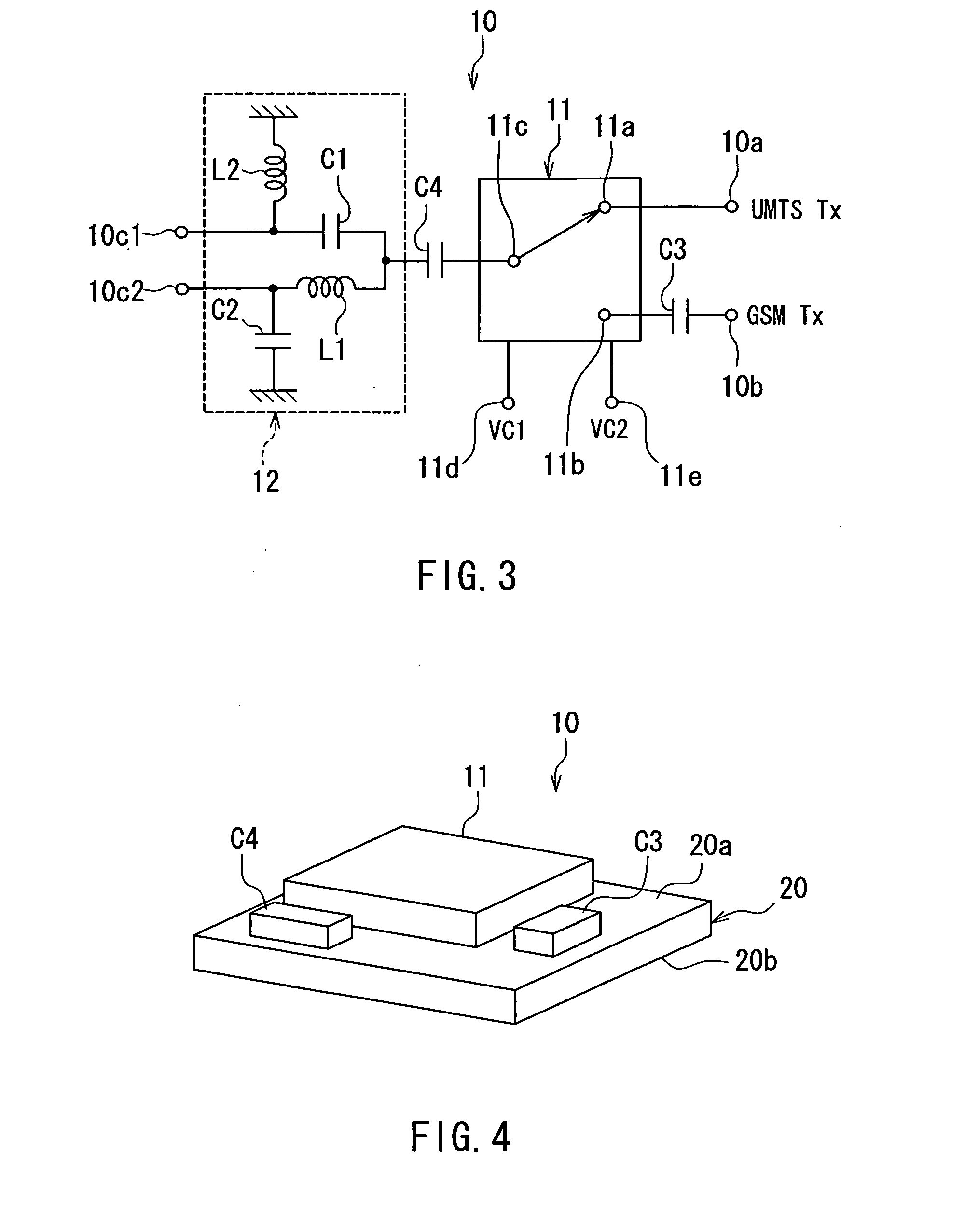High frequency electronic component
- Summary
- Abstract
- Description
- Claims
- Application Information
AI Technical Summary
Benefits of technology
Problems solved by technology
Method used
Image
Examples
first embodiment
[0080]Preferred embodiments of the present invention will now be described in detail with reference to the drawings. Reference is first made to FIG. 1 to describe an example of a high frequency circuit of a cellular phone including a high frequency electronic component of a first embodiment of the invention. FIG. 1 is a block diagram illustrating the circuit configuration of this example of high frequency circuit. This high frequency circuit processes a signal of the GSM system, which is based on the TDMA system, and a signal of the UMTS, which is based on the WCDMA system.
[0081]Table 1 shows the types of GSM signals, and Table 2 shows the types of UMTS signals. In Tables 1 and 2 the “Uplink” columns show the frequency bands of transmission signals, and the “Downlink” columns show the frequency bands of reception signals.
TABLE 1SystemFrequency bandUplink (MHz)Downlink (MHz)GSM850850 MHz band824-849869-894(AGSM)GSM900 (EGSM)900 MHz band880-915925-960GSM1800 (DCS)1800 MHz band 1710-17...
second embodiment
[0131]A high frequency electronic component of a second embodiment of the invention will now be described with reference to FIG. 14. FIG. 14 shows a transmission circuit 7 including the high frequency electronic component 10 of the second embodiment. In the second embodiment, the IC 2 generates and outputs a transmission signal GSM Tx in the form of a balanced signal, not in the form of an unbalanced signal. The transmission circuit 7 of the second embodiment includes a balun 15, in addition to the components of the transmission circuit 7 of the first embodiment. The balun 15 has two balanced inputs and an unbalanced output. The two balanced inputs of the balun 15 are connected to terminals of the IC2 that output the transmission signal GSM Tx in the form of a balanced signal. The unbalanced output of the balun 15 is connected to the input terminal 10b of the high frequency electronic component 10. The balun 15 converts the transmission signal GSM Tx in the form of a balanced signal...
third embodiment
[0141]A high frequency electronic component of a third embodiment of the invention will now be described with reference to FIG. 18. FIG. 18 shows a transmission circuit 7 including the high frequency electronic component 40 of the third embodiment. The high frequency electronic component 40 of the third embodiment is for use in the transmission circuit 7 that processes two UMTS transmission signals UMTS Tx1 and UMTS Tx2 and a GSM transmission signal GSM Tx. In the third embodiment, in the case where the transmission signal GSM Tx is a transmission signal of at least one of GSM850 (AGSM) and GSM900 (EGSM), the transmission signals UMTS Tx1 and UMTS Tx2 are transmission signals of two different bands among the bands V, VI and VIII whose frequency bands are close to those of GSM850 (AGSM) and GSM900 (ESGM). In the case where the transmission signal GSM Tx is a transmission signal of at least one of GSM1800 (DCS) and GSM1900 (PCS), the transmission signals UMTS Tx1 and UMTS Tx2 are tran...
PUM
 Login to View More
Login to View More Abstract
Description
Claims
Application Information
 Login to View More
Login to View More - R&D
- Intellectual Property
- Life Sciences
- Materials
- Tech Scout
- Unparalleled Data Quality
- Higher Quality Content
- 60% Fewer Hallucinations
Browse by: Latest US Patents, China's latest patents, Technical Efficacy Thesaurus, Application Domain, Technology Topic, Popular Technical Reports.
© 2025 PatSnap. All rights reserved.Legal|Privacy policy|Modern Slavery Act Transparency Statement|Sitemap|About US| Contact US: help@patsnap.com



